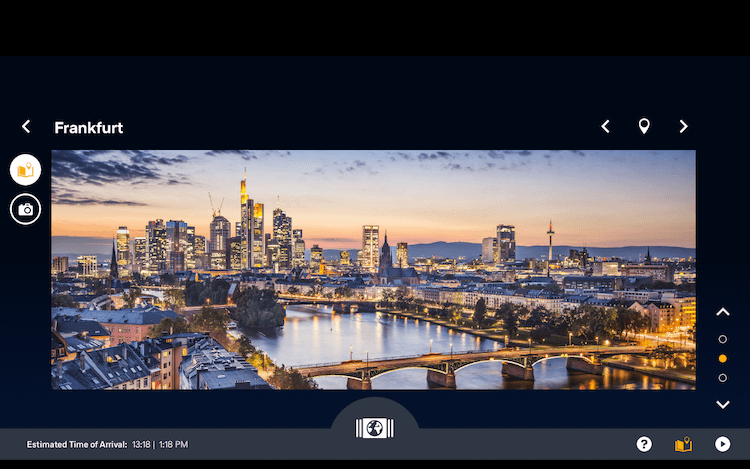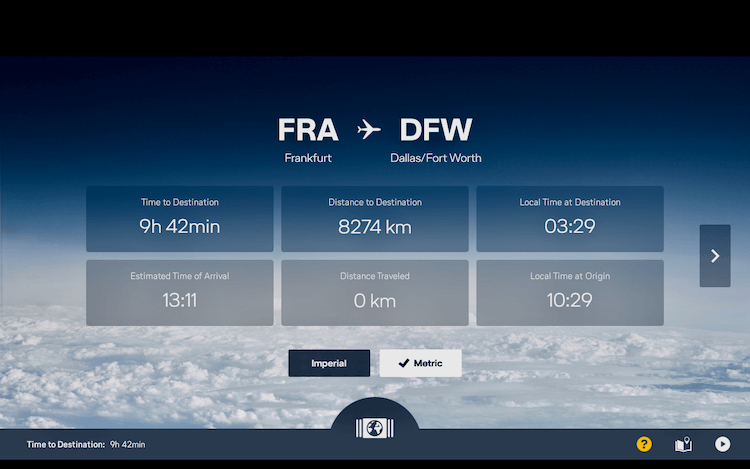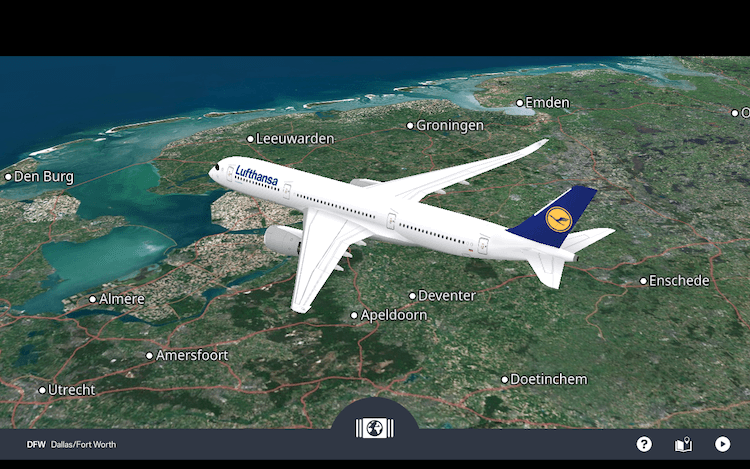FlightPath3D heads to new dimensions and destinations
This is a special feature from PAX Tech's AIX Hamburg June 2022 issue, on page 22.

Duncan Jackson, President of Flightpath3D
Walk up and down the aisles of modern passenger jet and view the flickering screens at each seat, and it would not take much of a scientific study to determine that the moving map is still one of the most popular features of any inflight entertainment system.
The latest versions render a view of the world below in vivid, multi-dimensional ways. The images, in colorful 3D technology use information from the aircraft’s flight data recorder and ARINC communications. And though it is viewed by the passenger in much the same way as the movies or television, the work behind getting the images to the screen is vastly different and potentially more sensitive than boarding the latest Hollywood blockbuster.

In addition to providing position, Flightpath3D’s moving maps can provide destination information
“Doing maps is hard,” says Duncan Jackson, President of Flightpath3D in Lake Forest, California. “It is not easy. There are political constraints that have to be changed. You have to customize it for the political perspective of the airline in terms of what restricted territories they recognize.”
If that is not a thorny enough topic all by itself, there are multiple languages that must included to make passengers feel comfortable on an airline that may have a vast route system. As a supplier of software for moving maps, Flightpath3D has the challenge of working with legacy IFE systems, some which have hardware that can be nearly 20 years old. A consistent experience must be delivered to multiple aircraft types. As the IFE experience evolves, the same companies that bring moving maps to the seatback also must supply the same functions to a passenger’s personal electronic device.
All those challenges and more presented themselves to Flightpath3D with its most recent customer. Lufthansa German Airlines will install the Flightpath3D software product on four aircraft types initially and progress throughout its long-haul fleet. It is a large, mixed fleet that requires Flightpath3D to operate on legacy systems with Panasonic and Safran hardware.

Flightpath3D uses information from the flight data recorder and ARINC communication
“The map product is intensely used among our passengers onboard, enhancing their experience by offering them an innovative interactive 3D flight map adds value to our passenger journey,” said Susanne Wawer, Lufthansa Group IFEC Product Manager in the May announcement of the contract with Flightpath3D.
Jackson says what impresses Lufthansa is one of the company’s newest features that it will be showing for the first time at AIX. It gives the passenger a cockpit view with perspectives of the aircraft’s position in several orientations along with altitude, airspeed and other important statistics. The feature is flying on several of the 70 airline customers that have selected a Flightpath3D product. Total installations of Flightpath3D now surpass 4,000 aircraft.
The other new feature that Flightpath3D will showing visitors in Hamburg is an interactive and immersible replacement for what was the route map with the spider web of curved lines that has been a regular fixture in the seatback magazine.With Flightpath3D’s smart travel guide, users can select an airline destination and can call up travel information, professional reviews and find out the top places to visit.

Flightpath3D uses information from the flight data recorder and ARINC communication
“This is a new kind of smart video platform that feels more like an Instagram reel or TikTok,” says Jackson. With it, he says airlines can use the time a passenger has on board to get them interested and excited about their destinations.
Though the company still was able to outfit more than 700 aircraft last year, the pandemic downtime allowed it to focus on moving product features forward. Work was done on browser-based technology that brings moving maps and features to a passenger’s personal device. One of the main concerns of airline customers that Flightpath3D found is the need for passengers to keep up to date on a fast-changing travel environment.
“We recognized that the industry is in a position where it has never been more important to articulate what routes are open and where you can fly,” Jackson says. Features in Flightpath3D allow passengers flying into a destination like New York to access all the working routes an airline operates out of the city allowing them to explore the airline possibilities from the seatback.
“This is the time you are wrapped in the brand of the airline and that is the moment for the airline to tell you about all the places they fly to and inspire you to visit other places,” Jackson says.
Flightpath3D was formed nine years ago. The difficult nature and challenges of supplying moving maps has also made it a specialist supplier that prides itself on its on-time delivery and the ability work across multiple systems.
“The reason airlines choose Flightpath3D is because we are the experts,” Jackson says.

